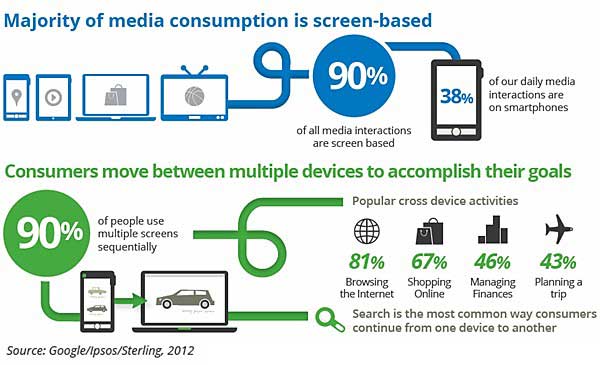How Has Digital Marketing Changed In The Last 3 Years, Part 2?
Two weeks ago now I posted about Google’s recent Panda and Penguin algorithm updates have changed digital marketing forever. This week I will continue upon this subject with the second installment of How Digital Marketing Has Changed in the Last Three Years.
Part #2 – Growth of Mobile Adoption
The second primary shift within the digital space has been the growth of mobile devices which now make up half, or 49.7%*, of total US cell phones. According to Deloitte Digital 4.8 million people worldwide own a cellular phone where as 4.2 billion own a toothbrush. Learn more
Smart phones and now tablets are changing the way people engage with brands across multiple screens.
It is now common for consumers to interact with brands in two distinct ways, Sequential Engagement and Simultaneous Engagement. No longer are consumers engrossed by television like 15 years ago but are bombarded by information overload. Today consumers can be seen simultaneously watching TV, Youtube, or another content provider, on one device (laptop) while texting friends or tweeting from their smart phones. This divergence of focus has made it even more difficult to accumulate the collective attention in a predominantly ADHD world.
Consumers may also choose to consume their information sequentially completing tasks (like surfing the web, purchasing online, scheduling travel, etc…) while moving from one device to another. Google has an infographic that depicts this study on their Think with Google blog.

To combat this multi-engagement process, CMOs have approached a need for a single unified experience or omni-channel customer experience online. This has cause brand advocates to require the digital assets become consolidate and co-branded vendor sites to all but go away in favor of a unified look and feel controlled by Brand.


